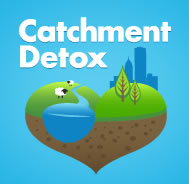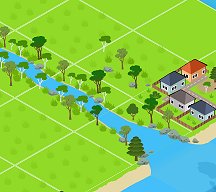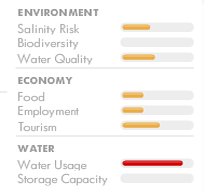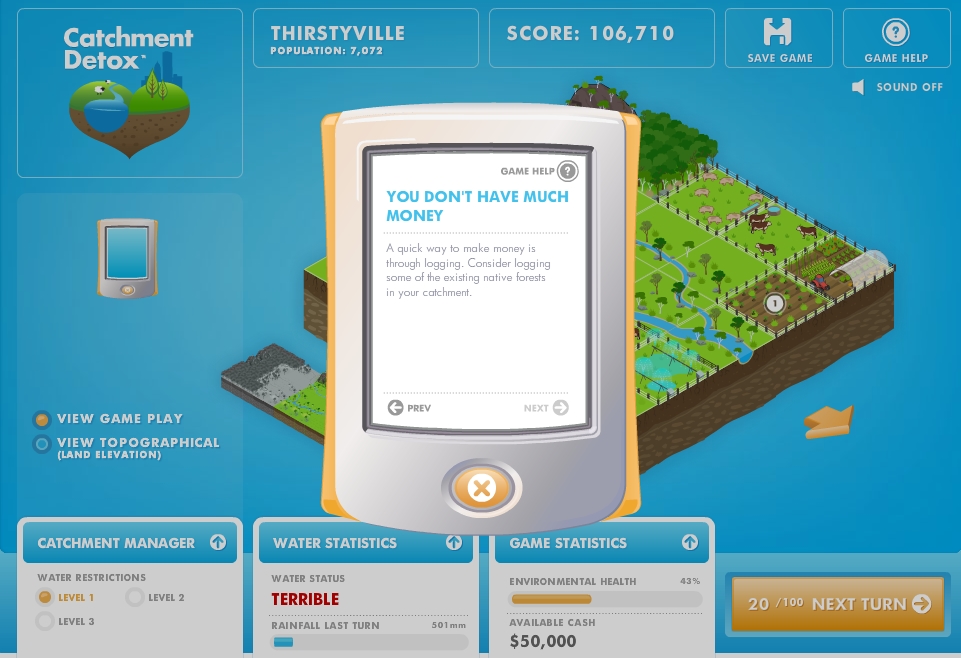No Blame in the Catchment Detox Game
 If you imagine you could do a better job managing waterways than the powers that be, now you can put your theories to the test, with no one to blame for bad decisions but yourself!
If you imagine you could do a better job managing waterways than the powers that be, now you can put your theories to the test, with no one to blame for bad decisions but yourself!

Catchment Detox is an easy-to-play but tough-to-master online simulation game from Australia. You’re in charge of successfully managing a river catchment while creating a sustainable, healthy economy. In 100 turns, you decide how and where to plant crops, when and where to log forests, where and when to build factories or set up national parks. Not so easy, because to do well you’ve got to make money, provide adequate water, skirt environmental problems and still provide food and economic support for the citizenry!

Keep your eye on the impact stats to compare the economic and environmental pros and cons of your decisions.
Some activities bring in more money, but use a lot of water. Others environmental benefits, but not much income. You can add or remove as many activities as you like (until you run out of money and/or turns!)
Good thing I’m not making any such decisions…here’s a screen capture of my game on Turn 20…water status “terrible” and almost broke! And logging those forests would be quick money in the bank….hmmmmm.


I love it! Its like SimCity but with water. They could add a social component to it and put it on Facebook. Hummm.
Would that mean others could see the wasteland I created? Wait…with a social component I could blame others! Just like real life!
I’ve gotten up to 674,000 in about 5 games. Are we going to challenge each other?
Good heavens, you need to get on your local water board! I will need to get my game on to top that.
Your Strategy? I am beginning to think the best way to a good score is to totally trash the environment, make a big pile of money, then clean in all up at the very end.
Relying on planting and harvesting Native Forests to raise funding for works projects such as small dams, canneries, fabric mills, pricey food production, etc. All food production is eco. All squares with any river on it I return to natural habitat as soon as possible.
However, I also took the opposite approach of turning 75+% of the land to natural habitat, and had only minor amounts of food production (maybe 6 squares) and still got a high score.
I’m assuming the ‘buffer’ zone established by returning all river squares to natural habitat is scored positively. Other mentions of runoff of nitrogen, pesticides, etc are missing but are likely fairly well correlated with salinity.
How are you making out now scorewise?
I’m not making out as well as you, but I’m going to give it another try based on your strategy!
How is it coming along?
well i got over 700,000
and thats with my own strategy, not yours bro
I can’t come close to competing with any of you!